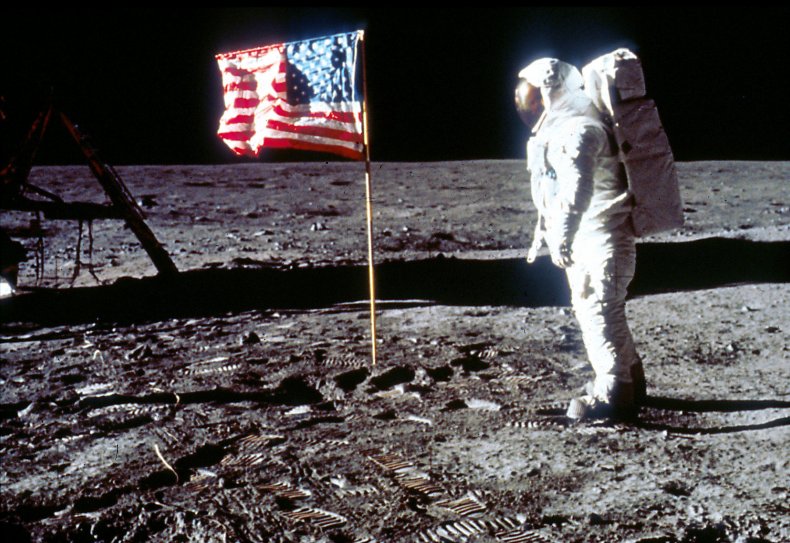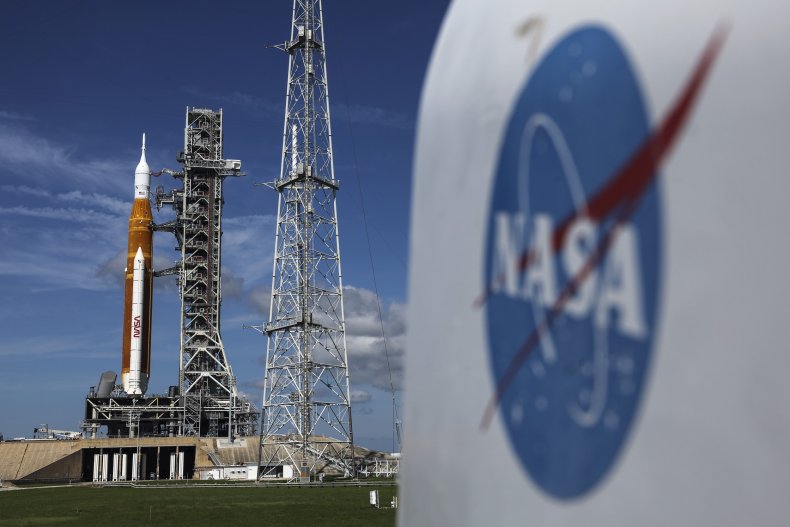Fifty years ago, the pioneering Apollo program, which landed astronauts on the moon for the first time, ended and NASA subsequently discarded much of the hardware that was used. Now, the space agency is preparing to go to the moon again but experts told Newsweek that just because we’ve been before, doesn’t necessarily mean that we can get there again.
NASA is now targeting the launch of Artemis I for September 3 after engine issues caused the first attempt to be scrapped. The mission is the first step in the Artemis program, which aims to return astronauts to the moon and establish a sustainable presence on the lunar surface, paving the way for future manned missions to Mars.
Artemis I will serve as a test of NASA’s next-generation Orion spacecraft and the Space Launch System—the most powerful rocket ever built. The mission comes five decades after NASA dismantled the Apollo program, shedding its capability to go to the moon.
Hank Pernicka, a professor of aerospace engineering at Missouri University of Science and Technology, told Newsweek that much of the hardware used in the Apollo missions was discarded or shared with museums, although some was used in the Skylab space station that flew in the early 1970s.

Photo by NASA/Liaison
Aside from this, the people that were behind the Apollo technology and the expertise they had retired long ago, Matt Siegler, a research scientist at Southern Methodist University and the Planetary Science Institute, who is participating in several new NASA missions, told Newsweek.
Building a launch vehicle and spacecraft capable of going to the moon is an extremely challenging task because there is very little scope for imprecision and error. Because of this, thousands of hours go into testing and tweaking, according to Robert Frost, an instructor and flight controller at NASA.
“The development and operations teams acquire expertise that no one else on the planet has. The vehicle cannot be built or operated without that expertise,” Frost said in a post on Quora.
The Saturn V rocket that was used in the Apollo program had over three million parts. Meanwhile, the command and service modules (CSM) and lunar module (LM) contained millions of additional parts.
“An individual person cannot contemplate the scale of detail needed to assemble and operate those vehicles, Frost said. “So, when the Apollo program ended, the factories that assembled those vehicles were re-tasked or shut down. The jigs were disassembled. The molds were destroyed. The technicians, engineers, scientists, and flight controllers moved on to other jobs. Over time, some of the materials used became obsolete.”
If we wanted to build another Saturn V rocket or Apollo CSM/LM today, this would be almost impossible, despite huge advances in technology.
“We don’t have the factories or tools. We don’t have the materials. We don’t have the expertise to understand how the real vehicle differed from the drawings. We don’t have the expertise to operate the vehicle,” Frost said.
“We would have to substitute modern materials. That changes the vehicle. It changes the mass, it changes the stresses and strains, it changes the interactions. It changes the possible malfunctions. It changes the capabilities of the vehicle. We would have to spend a few years re-developing the expertise. We would have to conduct new tests and simulations. We would have to draft new flight rules and procedures. We would have to certify new flight controllers and crew.”
Essentially, this would be like building a new vehicle. But even if we could recreate the Apollo hardware, there would be little point in doing so because most elements of the program can be “greatly improved upon” with modern technology, according to Pernicka.
“While any remaining Apollo hardware might still ‘work,” integrating it into our current designs is not generally feasible,” he said.
The goals of both Apollo and Artemis are also very different, hence why a distinct technological approach is required today.
“The intent of Artemis is sustained lunar exploration and development, with hardware being upgraded continuously,” Pernicka said. “This was not done with Apollo, as that program was abruptly canceled without any transition plan in place for continuing lunar exploration with human spaceflight. Hopefully, the lesson we learned from Apollo is that a ‘plant-the-flag and run’ approach is not a prudent one.”
But just because we have flown to the moon and landed astronauts there before, does not automatically mean we can get there again, Amrutur Anilkumar, a professor of mechanical and aerospace engineering at Vanderbilt University and director of the Vanderbilt Aerospace Design Laboratory, told Newsweek.
“This is not all related to us losing our way after Apollo. There is a bit of that, but the larger aspect is how to ensure perfection this time around, with all the changes to design and incorporation of new sensing technologies and advanced computing capabilities,” Anilkumar said.

Kevin Dietsch/Getty Images
According to Pernicka, modern technology and expertise make the task a “little easier” today, but human spaceflight to the moon (and back) remains “very difficult.”
“There is very little room for error,” he said. “While safety nets and design redundancies are implemented in as many systems as possible, many single-points-of-failure remain. If any of those points were to fail, the outcome for the astronauts would be very poor. Modern technology has certainly reduced much risk from the Apollo program, but significant risk remains.”
To put the risks into context, Anilkumar compared the engineering of spacecraft and rockets to that of airplanes.
“About 100,000 airplane flights take off and land every day, and when scaled to a year, this is a mind boggling 36.5 million flights,” he said. “We learn day in and day out to make sure that the odds for failure can be kicked farther and farther. Over a century we have perfected the design of airplanes and flight systems for reliability so that humanity is confident enough to fly.”
“We do not have such statistics with rocket flight,” Anilkumar continued. “In fact, we have flown to the moon for only about ten crewed landings and some more uncrewed landings. How do you achieve the level of reliability and surety with such little data, especially when human flight is involved? Now, that is rocket science—to be able to design something perfectly when you do not have second chances. Just because we have flown to the Moon before is no guarantee for success this time around.”
We have made tremendous progress in engineering—with materials, instrumentation, computers and software—and they will all be part of the new designs for the Apollo program, he said.
“One needs to go through every test methodically—and there are thousands of them—before the flight can be signed off on,” Anilkumar said. “Even a small mistake can fail a mission. Human space flight requires utmost attention to safety and reliability.”
According to Pernicka, the greatest challenge in the Apollo program relates to the Human Landing System (HLS), which will involve a SpaceX Starship vehicle shuttling astronauts from the Orion spacecraft orbiting the moon to the lunar surface and back again.
“The hardware involved and the mission operations are both quite complex compared to the Apollo missions,” he said. “I do think NASA will overcome this challenge, as we have the technology to accomplish these lunar landings—but the development and testing processes will need to be executed nearly flawlessly prior to the first landing attempt.”
With Artemis, NASA didn’t necessarily start from zero when it came to developing the rocket. The SLS builds on technology borrowed mainly from the Space Shuttle program, according to Siegler.
“In that sense, building the rocket itself was easier in that we had the parts—like starting with a kit of legos rather than having to carve plastic bricks from scratch. That said, the space shuttle was never designed to get its payload all the way to the moon, so building it based on shuttle parts and technology still left a lot of really tough (and therefore expensive) development,” he said.
But aside from any technical or logistical challenges, Siegler said the greatest challenge for Artemis could simply be apathy.
“This is essentially what happened with the Apollo program,” he said. “It wasn’t any technical challenge, but lack of public and political support of the program that killed it. I have heard people that grew up during Apollo claiming that they are not seeing the same level of excitement Apollo had, and that is not a great sign.”
“Apollo had a huge PR build up that is starting with Artemis but is not in full bloom the way the 1960s space race was. I hope that excitement will come and build as things start to really happen and as other nations, namely China, or non-nations (such as SpaceX), move forward with their own lunar and Mars exploration goals.”




















